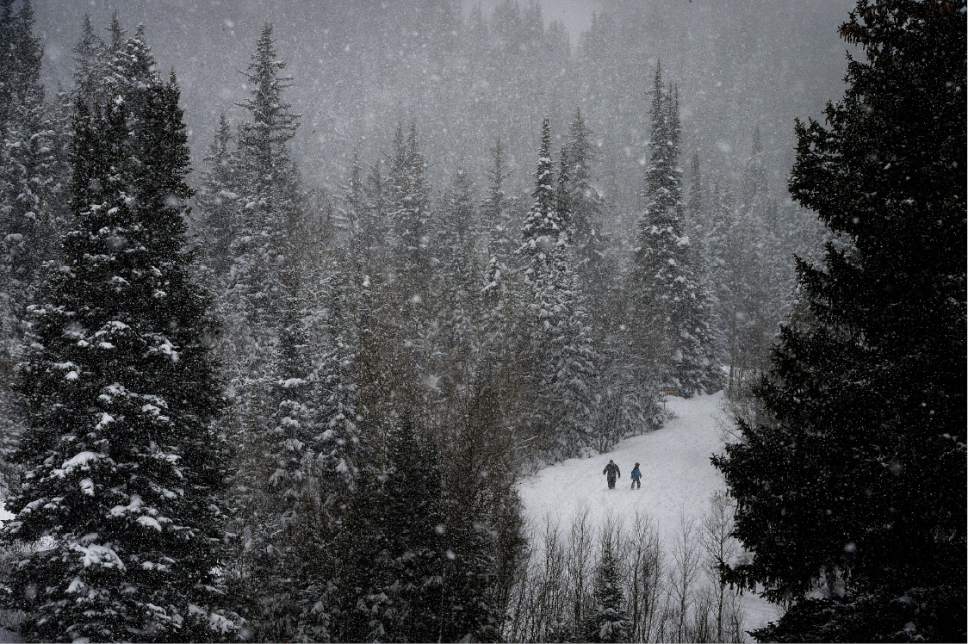This is an archived article that was published on sltrib.com in 2016, and information in the article may be outdated. It is provided only for personal research purposes and may not be reprinted.
Despite unseasonably high temperatures that broke multiple heat records last month, November's weather held few clues as to what sort of winter Utahns ought to expect.
Salt Lake City broke two long-standing heat records last month, and temperatures throughout the state ran 10-13 degrees above normal for much of the month.
But precipitation totals were more erratic, said Randy Julander, supervisor for the Natural Resources Conservation Service's Utah Snow Survey.
In the northern half of the state, he said, mountainous areas stayed high and dry while some lower elevations reported wetter than normal conditions.
In the south, the trend reversed, with at or above-normal snow accumulation in the mountains, while the valleys remained dry.
Snowpack above Salt Lake City, in the Provo-Utah-Jordan basin, is currently sitting at 99 percent of normal, according to the NRCS's monthly Utah Climate and Water Report.
What this means for the future, Julander said, is anyone's guess.
The National Weather Service Climate Prediction Center is forecasting above-normal temperatures through February for the entire state of Utah.
But while relatively warm temperatures prevented snowpack from accumulating in October and early November, that's not likely to happen in the upcoming solidly wintry months, where even above-normal temperatures can still mean below freezing. Warm air also is capable of holding more moisture than cold air, Julander said, which means Utah could be in for some additional snow.
The National Weather Service gives Utah equal chances of having above, below or near-normal precipitation over the next three months.
"There's a huge question mark right now as to what kind of weather we will get," Julander said. "We could go dry, or go above, there's no predictability about it."
Twitter: @EmaPen



